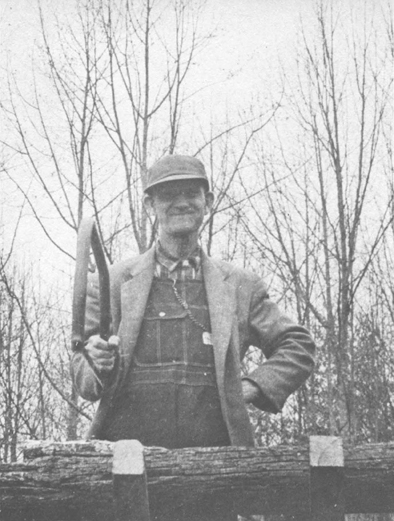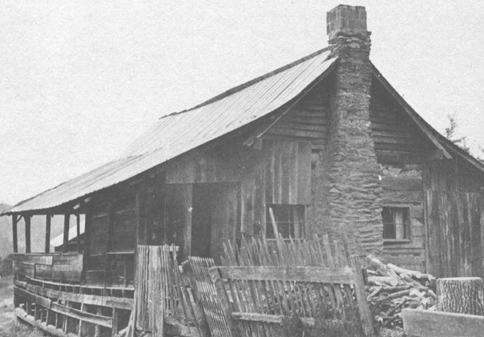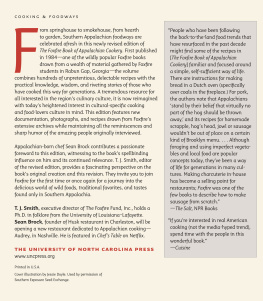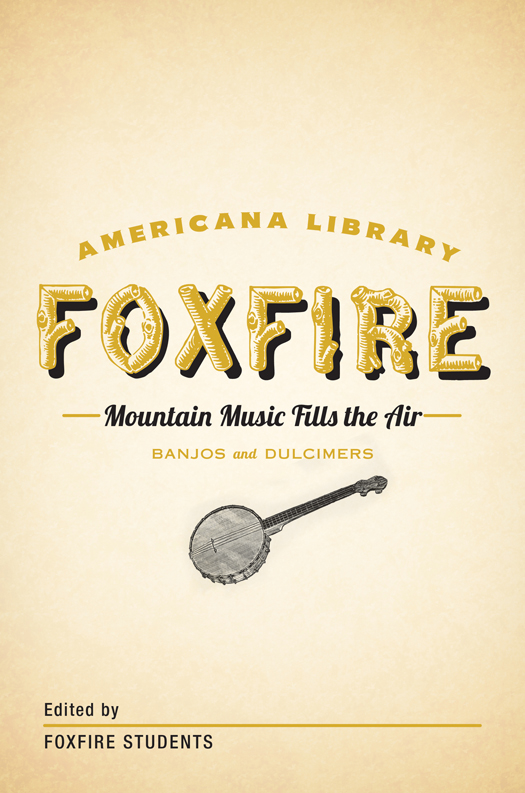ANCHOR BOOKS EDITION, SEPTEMBER 2011
Copyright 1975 by The Foxfire Fund, Inc.
All rights reserved. Published in the United States by Anchor Books, a division of Random House, Inc., New York.
Anchor Books and colophon are registered trademarks of Random House, Inc.
This material originally appeared in Foxfire 3, 1975 by The Foxfire Fund, Inc. Reprinted by permission of Random House, Inc.
eISBN: 978-0-307-94830-4
v3.1
Table of Contents
A NOTE ABOUT THE FOXFIRE AMERICANA LIBRARY SERIES
For almost half a century, high school students in the Foxfire program in Rabun County, Georgia, have collected oral histories of their elders from the southern Appalachian region in an attempt to preserve a part of the rapidly vanishing heritage and dialect. The Foxfire Fund, Inc., has brought that philosophy of simple living to millions of readers, starting with the bestselling success of The Foxfire Book in the early 1970s. Their series of fifteen books and counting has taught creative self-sufficiency and has preserved the stories, crafts, and customs of the unique Appalachian culture for future generations.
Traditionally, books in the Foxfire series have included a little something for everyone in each and every volume. For the first time ever, through the creation of The Foxfire Americana Library, this forty-five-year collection of knowledge has been organized by subject. Whether down-home recipes or simple tips for both your household and garden, each book holds a wealth of tried-and-true information, all passed down by unforgettable people with unforgettable voices.
BANJOS AND DULCIMERS
T rying to trace the history of the banjo as a musical instrument is one of those tasks that can quickly make you want to tear your hair out. Though hundreds of articles have been written on the subject [a fine bibliography is available from Joe Hickerson at the Archive of Folk Song in the Library of Congress], many are contradictory and filled with speculation. On one fact, however, nearly all are in agreement: that Americas favorite folk instrument was brought to this country from Africa and Jamaica by Negro slaves in the eighteenth century. Thomas Jefferson, for example, in his Notes on Virginia (1782) mentions the banjar as being the chief instrument of the American Negro.
How did it get to Africa? Pete Seeger speculates that the Arabs may have brought it to the African West Coast [How To Play the Five String Banjo, third edition, published by the author in Beacon, New York, 1961]. We know that instruments like it in the Near and Far East (the sitar and sarod, for example) have been common for nearly as long as records exist, and stringed instruments with skin heads and wooden shells are known to have existed nearly 4,500 years ago in Egypt [The Five-String Banjo in North Carolina by C. P. Heaton; Southern Folklore Quarterly, Volume 35, Number 1, March 1971, page 62]. What paths the instrument followed through these countries, however, is simply guesswork.
At any rate, the instrument did make it to this country, where it began to undergo (and survive) an amazing amount of experimentation and popularity, despite a popular white belief that all banjo players and fiddlers were certainly bound for Hell. Thick as fiddlers in Hell is an expression still used in our part of the mountains.
The first banjos to come to our coast had two, three or four strings (of horsehair, grass or catgut) and a hide stretched across a gourd. Cats, possums, raccoons, sheep, snakes and other assorted creatures supplied the skins for the early banjo heads [Heaton, page 62]. An article by C. J. Hyne in the December 15, 1888, issue of the Boys Own Paper [reprinted in the March 1974 issue of Mugwumps] says, With rapid strides it improved in form. First a wooden hoop, and then a metal one; first a rough skin for the drum, then the best parchment; first nails to hold it on, then neatlymade tension screws. At one time the strings were made of anything that came handy; now they are formed from the intestines of the agile cat. That was in 1888. Since then, the number of variations that have been tried that we know about would dwarf those of Hynes experience.

I LLUSTRATION 1

I LLUSTRATION 2
Usually cited as the most important development in the history of the instrument itself was the addition of the shorter chanter, drone, thumb, or fifth string. Here again, facts are hard to come by, but many historians credit Joel Walker Sweeney, a Virginian who was a professional blackface minstrel, with the addition sometime between 1830 and 1845. His original banjo is now in the possession of the Los Angeles County Museum. Arthur Woodward writes of Sweeney and the acquisition in the museums Spring 1949 quarterly [Volume 7, Number 3, page 7]. The article says, in part: In 1890, Mr. F. J. Henning, a teacher of music and a skilled banjo performer, learned of the existence of Joel Sweeneys original banjo He entered into negotiations with the family and secured the old instrument [It] is made of a dark, reddish colored hardwood. The head is of stained leather, fastened on with tacks. There are no strings. Scratched in the wood, still faintly visible, are the initials J.S. [One Sweeney banjo will be found documented ].
Though all banjos prior to 1880 were fretless [Heaton, page 64], demand for fretted ones by minstrel banjoists at that time caused several manufacturers to put them on the market. Though their popularity lapsed in the early 1940s, players like Earl Scruggs brought them back, and today the five-string, fretted banjo (often with a plastic head) is again king.
Our interest in the banjo really began when a whole new group of students at our school began to learn to play it riding the crest of still another surge in its popularity. We knew almost nothing about itnot even where to begin to look for information. Now, two years later, we feel weve made a good beginning, and everything we read confirms that. In the Heaton article, for example, the author quotes Louise Rand Bascom, who, in 1909, described the North Carolina mountain banjo of that day for the April-June issue of Journal of American Folklore: The banjo is home-made, and very cleverly fashioned, too, with its drum-head of cats hide, its wooden parts of hickory (there are no frets). As you read the following articles, youll find that to still be true in some cases.
Heaton continues by quoting an article about Frank Proffitt that appeared in the October-November 1963 issue of Sing Out: As a boy, I recall going along with Dad to the woods to get the timber for banjo-making. He selected a tree by its appearance and by sounding hitting a tree with a hammer or axe broadsided to tell by the sound if its straightgrained. As I watched him shaping the wood for a banjo, I learned to love the smell of the fresh shavings as they gathered on the floor of our cabin. When the strings was put on and the pegs turned and the musical notes began to fill the cabin, I looked upon my father as the greatest man on earth for creating such a wonderful thing out of a piece of wood, a greasy skin, and some strings. Youll find many echoes of that here too. In fact, three of the banjo makers represented here are from Proffitts home county.







